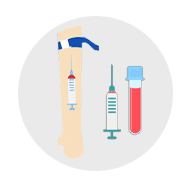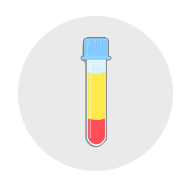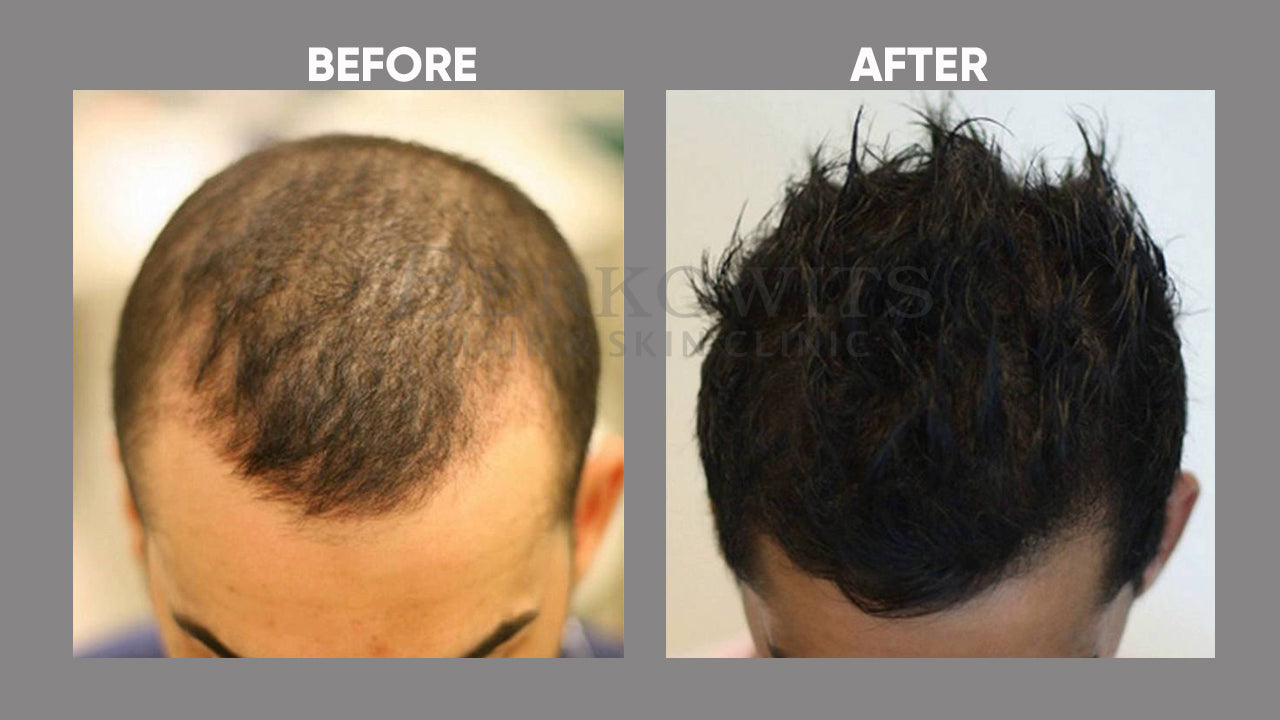
Platelet Rich Plasma For Hair
PRP uses your blood to manage hair loss.
PRP stands for Platelet Rich Plasma. the fundamental idea at work behind this treatment is rather simple – the platelet present in your blood is used to treat Androgenetic Alopecia, PRP hair treatment is formed when red blood cells and a portion of white blood cells are eliminated from the plasma and platelets. The end result is a rich concentration of platelets in the plasma.
What is PRP Hair Treatment?
PRP Hair Loss Therapy is a non-invasive hair loss treatment in which a mixture of PRP (Platelet Rich Plasma) is growth-injected factors into the patient’s scalp to provide strength to the miniaturized hair follicles and make them healthier. The major role that platelets play is that they help in the clotting of blood. Besides, hundreds of proteins called growth factors are also contained in platelets that are imperative for the healing of injuries.
As the name suggests, PRP is nothing but plasma with a greater concentration of platelets what is typically found in blood. The increase in concentration of platelets and hence, the growth factors can be 5 to 10 times greater (or richer) than usual. In order to develop a PRP preparation patient’s blood is drawn and the platelets are separated from other blood cells. The concentration of platelets is increased through a process called centrifugation. After the completion of this process, the increased concentration of platelet is added to the remaining blood.
How is PRP Hair Treatment Performed?
The PRP process is initiated by drawing a small blood sample of 30 to 60cc from the patient. This blood sample is then spun in a centrifuge that creates the concentrated PRP. After this, the PRP is injected in the areas of the scalp where treatment is required. Local anesthesia is usually administered to numb the scalp region for sensation of pain. The entire procedure is complete under an hour from start to finish.
Platelets can cause growth of hair follicles through stimulation of the stem cells as well as other cells in the microenvironment of the hair follicle. These platelets are multipurpose as they promote healing, response to injury and formation of new cellular growth, accelerate the rate and degree of tissue healing and regeneration. However, the prime purpose of using PRP in restoring hair is to make the inactive or newly implanted hair follicles to enter the growth phase.PRP therapy is conducted under expert guidance and by specialized professionals. At Berkowits you will find such professionals who are adept at performing this therapy since many years.
While it is known to stop hair loss it can also reverse the miniaturization of the hair caused by androgenic alopecia or male pattern baldness. Multiple sessions (3-4 sessions) are recommended.This is not a surgical procedure, it is a non-invasive procedure which leaves no scar. The blood is extracted is much lesser than the amount that is generally extracted in blood donation camps. It is also done under a topical anesthesia and therefore does not hurt.
The PRP process is initiated by drawing a small blood sample of 30 to 60cc from the patient. This blood sample is then spun in a centrifuge that creates the concentrated PRP. After this, the PRP is injected in the areas of the scalp where treatment is required. Local anesthesia is usually administered to numb the scalp region for sensation of pain. The entire procedure is complete under an hour from start to finish.
Platelets can cause growth of hair follicles through stimulation of the stem cells as well as other cells in the microenvironment of the hair follicle. These platelets are multipurpose as they promote healing, response to injury and formation of new cellular growth, accelerate the rate and degree of tissue healing and regeneration. However, the prime purpose of using PRP in restoring hair is to make the inactive or newly implanted hair follicles to enter the growth phase.PRP therapy is conducted under expert guidance and by specialized professionals. At Berkowits you will find such professionals who are adept at performing this therapy since many years.
While it is known to stop hair loss it can also reverse the miniaturization of the hair caused by androgenic alopecia or male pattern baldness. Multiple sessions (3-4 sessions) are recommended.This is not a surgical procedure, it is a non-invasive procedure which leaves no scar. The blood is extracted is much lesser than the amount that is generally extracted in blood donation camps. It is also done under a topical anesthesia and therefore does not hurt.
STEPS
-

Step 1
-

Step 2
-

Step 3
-

Step 4
How does PRP work in restoring hair?
PRP hair treatment is infused through injections into the scalp to stimulate existing hair for faster growth with enhanced thickness. When used as an addition in hair transplant, these PRP injections readily help in optimizing survival rate of the grafts and boost hair growth.
What's the turnaround time for hair growth?
PRP works on the principle of blood flow stimulation around the scalp. After the procedure, there could be a slight swelling around the site of the treated scalp area. This is an indicator of the hair growth process. Hereafter, the hair follicles begin to emerge stronger and at a much faster rate. This process takes place within 6 weeks right after the treatment. As for hair growth, 3 to 4 months is the normal turnaround time for visible signs of results. To improve upon the results, the patient can choose to go for a second PRP session as well.








